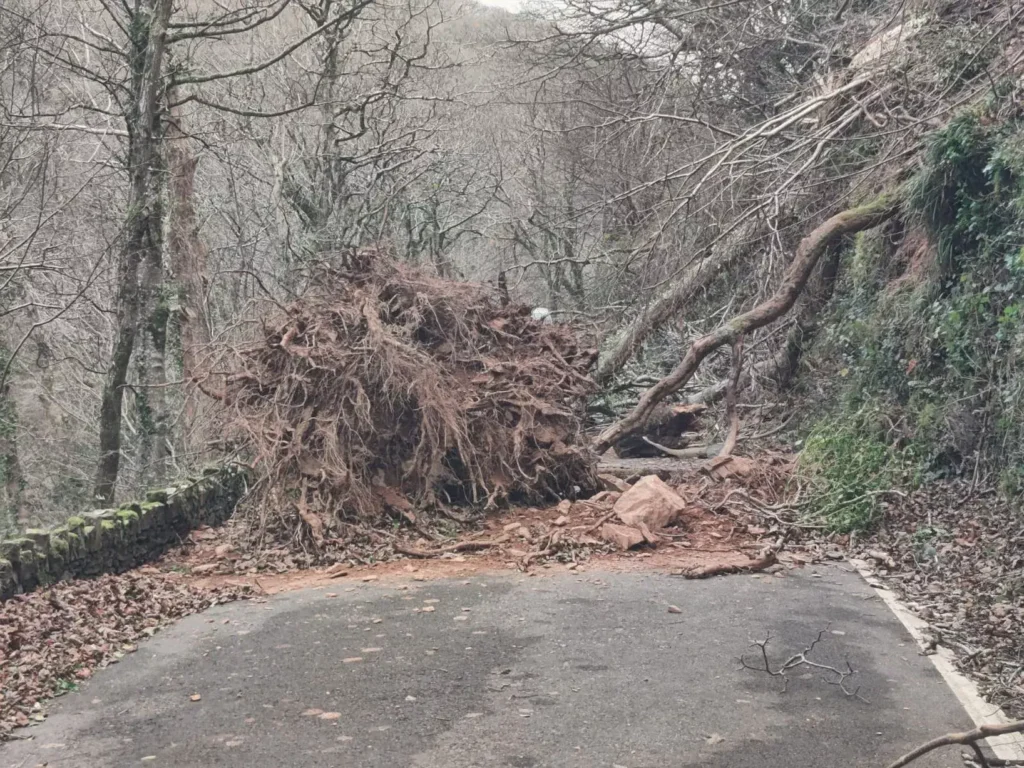Exmoor storm damage has left a trail of destruction in its wake. The National Trust South West rangers have been working tirelessly to clear over 300 fallen trees from the national park. The storm, which hit in mid-December, left many footpaths in the 621-mile network unsafe.
Rangers have made significant progress in clearing the trees, with most major routes now reopened. However, some sections remain impassable and will require further attention in phase two of the operation. Sue Applegate, senior public rights of way and access officer, warns that users should still exercise caution.
The storm has also created new habitats for wildlife. Many of the felled trees will be left as deadwood to provide a source of food and shelter. It will also allow for a newly opened-up canopy to emerge, enabling more light to reach the forest floor.
Popular walks, including those along Dunkery Beacon and Valley of Rocks, have reopened. However, wooded sections of the Coleridge Way and Two Moors Way remain impassable. The South West Coast Path on Exmoor is open except between Culbone and Foreland Point.
In addition, the National Trust South West is working to restore the damaged areas. The trust is also seeking donations to support the restoration efforts. Furthermore, the incident highlights the importance of storm preparedness and the need for continued investment in flood protection measures.
The Exmoor storm damage has been significant, but the National Trust South West rangers have made substantial progress in clearing the fallen trees and reopening major routes.
The National Trust South West is now planning for the long-term recovery of the park, for the long-term recovery of the park, with local communities and partners to ensure the park’s resilience to future storms.









